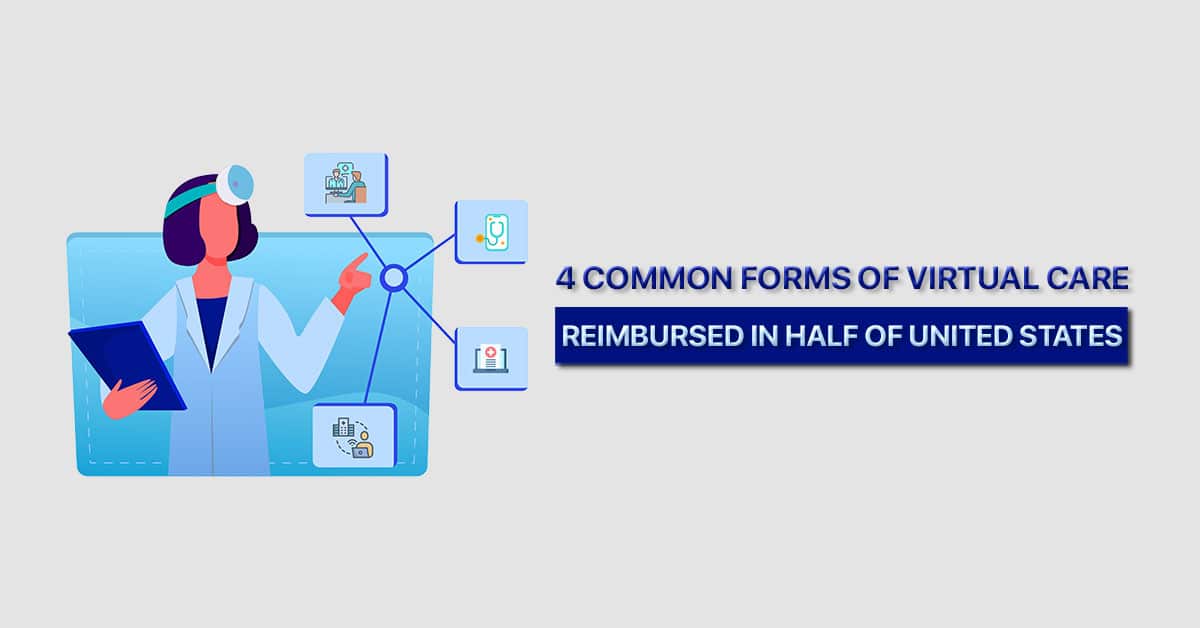According to a recent report, 25 states now provide reimbursement for video, store-and-forward, and audio-only telehealth, as well as remote patient monitoring through Medicaid.
Although every state and Washington, D.C. include some form of live video-based telehealth in their Medicaid programs, only 25 of them also offer Medicaid reimbursement for live video, store-and-forward telehealth, remote patient monitoring (RPM), and audio-only telehealth, as outlined in the Fall 2023 report by the Center for Connected Health Policy (CCHP). This report provides updates on telehealth policy changes since the Spring 2023 report and relies on information from CCHP’s online Policy Finder, drawing from state laws, administrative codes, and Medicaid provider manuals as primary sources.
While all states do provide reimbursement for live video-based telehealth services, there are certain limitations in place, including restrictions on eligible services for reimbursement, the types of healthcare providers covered, and the patient’s location.
In total, 33 state Medicaid programs now provide reimbursement for store-and-forward telehealth, a method involving the sharing of medical information with a healthcare practitioner through technology for evaluation or management. Since the spring, Florida, Montana, North Dakota, South Carolina, and Utah have introduced reimbursement for store-and-forward telehealth.
The report also highlights that five additional states have laws mandating Medicaid reimbursement for store-and-forward telehealth services, although the Center for Connected Health Policy (CCHP) has been unable to find official Medicaid policies confirming such reimbursement. These states are Colorado, Connecticut, Mississippi, New Hampshire, and New Jersey.
In terms of remote patient monitoring (RPM), 37 states now offer some form of reimbursement for these services in their Medicaid programs, up from 35 in the spring. The latest additions to include RPM reimbursement are Florida, Idaho, and Iowa. However, certain states have restrictions in place for Medicaid reimbursement of RPM, such as limiting it to home health agencies and specifying the clinical conditions that can be monitored.
Over the period between spring and fall, seven states have incorporated reimbursement for audio-only telehealth services into their Medicaid programs. This brings the total number of states allowing reimbursement for telephone-only care to 43, along with Washington, D.C. The seven states that have introduced this reimbursement are Alabama, Idaho, Kansas, Montana, Nebraska, Oklahoma, and Vermont.
The report highlights a significant shift in the reimbursement landscape for audio-only telehealth services. These services, once frequently ineligible for reimbursement, have now become the second most commonly utilized telehealth modality eligible for Medicaid reimbursement, closely trailing live video services.
A total of 25 states now offer Medicaid reimbursement for all four forms of virtual care, including states like Alaska, Kentucky, Maine, Hawaii, Illinois, South Carolina, Texas, and Iowa.
Additionally, the Center for Connected Health Policy report demonstrates that states are exploring alternatives to full licensure for out-of-state telehealth providers. For instance, Maryland, the District of Columbia, and Virginia have established a licensing reciprocity agreement to streamline the licensure process for physicians practicing within these three jurisdictions. There has also been an uptick in participation in inter-state compacts, particularly the Professional Counseling Compact and the Inter-jurisdictional Psychology Compact.
Telehealth-based prescribing is another significant focus for states, with several bills addressing the remote prescribing of controlled substances. One example is an Oklahoma bill that carves out an exception for virtually prescribing Schedule III, IV, or V medications approved by the US Food and Drug Administration (FDA) for treating substance use disorder.
At the federal level, the remote prescribing of controlled substances via telehealth has been an ongoing policy issue. Recently, the Drug Enforcement Administration (DEA) extended flexibilities allowing providers to prescribe controlled medications, including Schedule II drugs like Adderall and Ritalin, via telehealth for new patients without a prior in-person exam, extending this provision through 2024. This decision followed a two-day listening session where healthcare providers, telehealth companies, and other stakeholders advocated for the permanent allowance of virtual prescription of controlled substances without an initial in-person exam.

